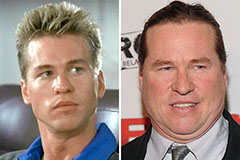Right here further down you will discover additional really good insight related to What Can Happen If You Flush Food Down the Toilet?.

Introduction
Many people are typically confronted with the issue of what to do with food waste, specifically when it pertains to leftovers or scraps. One common question that arises is whether it's all right to purge food down the bathroom. In this post, we'll look into the reasons that individuals could take into consideration purging food, the consequences of doing so, and different methods for appropriate disposal.
Reasons that people may take into consideration purging food
Absence of understanding
Some people might not be aware of the potential damage caused by purging food down the bathroom. They might erroneously think that it's a safe technique.
Ease
Purging food down the toilet might look like a quick and very easy option to getting rid of undesirable scraps, specifically when there's no neighboring trash bin readily available.
Idleness
In many cases, individuals may simply pick to flush food out of sheer negligence, without taking into consideration the effects of their actions.
Consequences of flushing food down the commode
Environmental impact
Food waste that winds up in rivers can add to air pollution and damage aquatic environments. Furthermore, the water used to flush food can stress water resources.
Plumbing issues
Flushing food can cause blocked pipelines and drains, triggering costly pipes repair work and troubles.
Sorts of food that should not be purged
Coarse foods
Foods with fibrous appearances such as celery or corn husks can get entangled in pipelines and create blockages.
Starchy foods
Starchy foods like pasta and rice can soak up water and swell, bring about clogs in pipes.
Oils and fats
Greasy foods like bacon or cooking oils ought to never be purged down the toilet as they can strengthen and trigger obstructions.
Appropriate disposal techniques for food waste
Making use of a waste disposal unit
For homes outfitted with garbage disposals, food scraps can be ground up and purged via the plumbing system. Nevertheless, not all foods are suitable for disposal in this manner.
Recycling
Certain food packaging products can be reused, decreasing waste and minimizing ecological effect.
Composting
Composting is an environmentally friendly method to dispose of food waste. Organic materials can be composted and utilized to enhance soil for gardening.
The value of appropriate waste management
Decreasing environmental damage
Correct waste administration practices, such as composting and recycling, assistance minimize contamination and preserve natural resources for future generations.
Shielding plumbing systems
By avoiding the technique of flushing food down the commode, home owners can prevent expensive pipes fixings and maintain the integrity of their plumbing systems.
Final thought
To conclude, while it might be alluring to purge food down the bathroom for comfort, it's important to recognize the potential consequences of this activity. By adopting correct waste monitoring techniques and disposing of food waste responsibly, individuals can add to healthier plumbing systems and a cleaner atmosphere for all.
FLUSH FOOD DOWN THE TOILET?
FLUSHING FOOD CAN CAUSE BLOCKED DRAINS IN YOUR HOME
All of the plumbing fixtures in your home are connected to the same sewer pipe outside of your home. This outdoor sewer pipe is responsible for transporting all the wastewater from your home to the Council sewer mains. Even small pieces of food that go down the kitchen sink can cause problems for your sewer. It should therefore be obvious that flushing larger bits of food, such as meat, risks a clog in either the toilet itself or the sewer pipes. Flushing greasy food is even more problematic because oil coagulates when it cools, coating the interior lining of your pipes.
THE TOILET IS NOT A BIN
Food isn’t the only thing that people shouldn’t be flushing down the toilet. People use the toilet to dispose of all kinds of things such as tampons, makeup wipes, dental floss, kitty litter and even underwear. Water goes to great lengths to educate residents about the high costs and stress placed on wastewater treatment systems simply from people flushing the wrong stuff down the toilet. It costs taxpayers millions of dollars each year, and homeowners thousands in blocked drain repairs.
FLUSHING FOOD IS A WASTE OF WATER
Flushing food is a waste of our most precious resource - water. In June this year Level 1 water restrictions were introduced to protect water supply from drought conditions. Much of New South Wales continues to be affected by prolonged drought with recent figures revealing up to 97 per cent of the state remains in drought. Depending on whether you have a single or dual flush toilet, every single flush uses between five and 11 litres of water. In the current climate this is a huge amount of water to be wasting on flushing food that should be placed in the bin (or better yet, the compost).
https://www.jabplumbingsolutions.com.au/blog/can-you-flush-food-down-the-toilet

I am just very fascinated with Think Twice Before Flushing Food Down Your Toilet and I am praying you liked the entire post. Those who enjoyed reading our blog post plz do not forget to share it. I treasure reading our article about Think Twice Before Flushing Food Down Your Toilet.
Book Today
 Anna Chlumsky Then & Now!
Anna Chlumsky Then & Now! Val Kilmer Then & Now!
Val Kilmer Then & Now! Amanda Bearse Then & Now!
Amanda Bearse Then & Now! Brooke Shields Then & Now!
Brooke Shields Then & Now! Jeri Ryan Then & Now!
Jeri Ryan Then & Now!